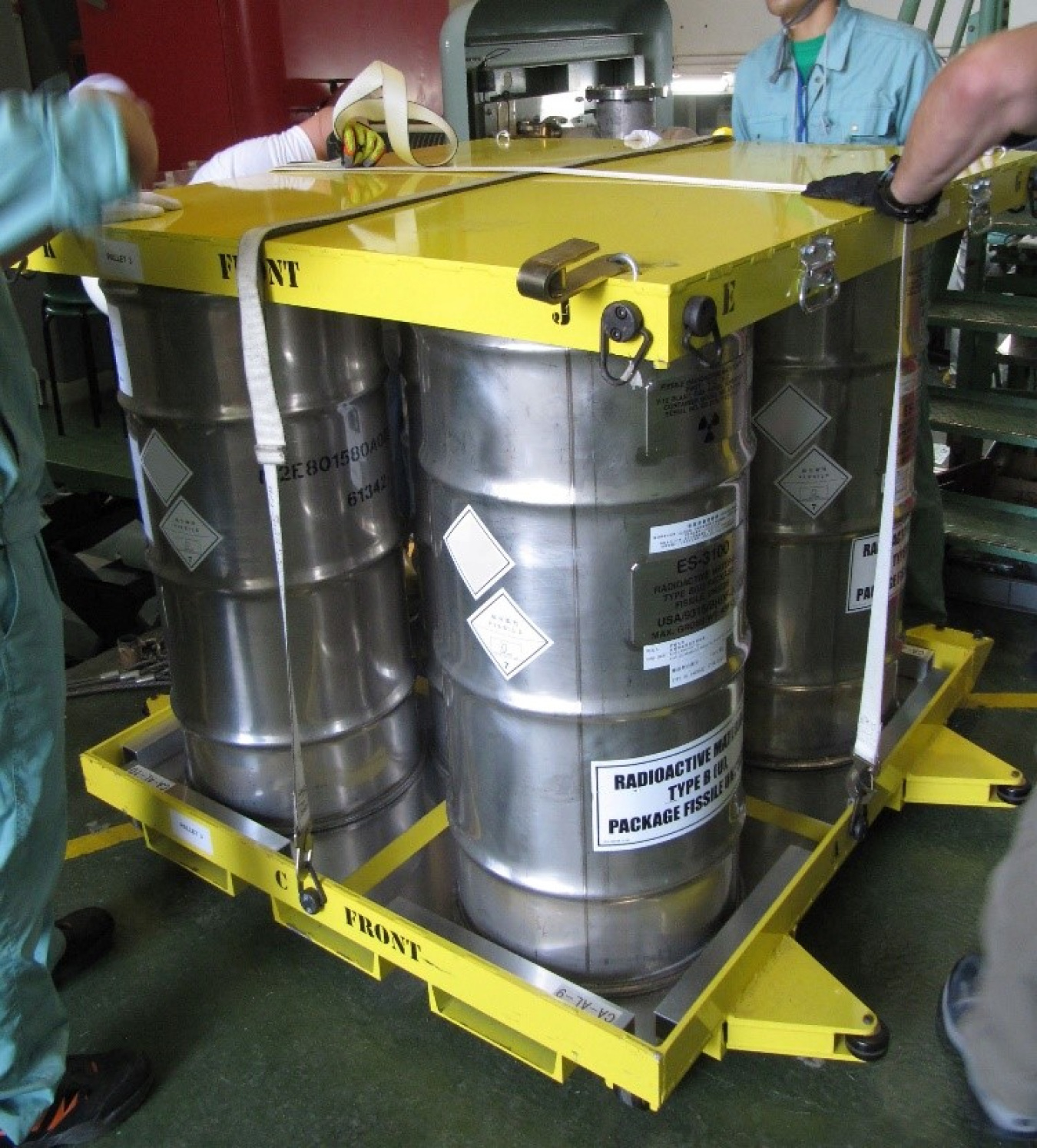 The US Department of Energy’s (DOE’s) National Nuclear Security Administration (NNSA) says it has removed 45 kilograms of highly enriched uranium (HEU) from Japan and returned it to the USA. Fulfilling a commitment made at the 2016 Nuclear Security Summit, NNSA and Japan’s Ministry of Education, Culture, Sports, Science and Technology (MEXT) have removed all HEU from the Kyoto University Critical Assembly (KUCA).
The US Department of Energy’s (DOE’s) National Nuclear Security Administration (NNSA) says it has removed 45 kilograms of highly enriched uranium (HEU) from Japan and returned it to the USA. Fulfilling a commitment made at the 2016 Nuclear Security Summit, NNSA and Japan’s Ministry of Education, Culture, Sports, Science and Technology (MEXT) have removed all HEU from the Kyoto University Critical Assembly (KUCA).
Over three years, NNSA, MEXT, and Kyoto University transferred 45 kilograms of HEU from Japan to the USA as part of their shared non-proliferation goal of minimising HEU worldwide. This accomplishment follows the May announcement by President Biden and Prime Minister Kishida that NNSA and MEXT had removed 30 kilograms of HEU from three Japanese research reactors in March 2022.
The removal effort was primarily undertaken during the COVID-19 pandemic and required close collaboration to overcome numerous challenges – both technical and logistical. To accomplish critical work that could only be performed in person, US technical experts underwent a 14-day quarantine upon their arrival in Japan on four separate occasions. Following shipment to the USA, the HEU was securely transported to the Y-12 National Security Complex in Oak Ridge, Tennessee, and the Savannah River Site in Aiken, South Carolina, where it will be down-blended to low-enriched uranium (LEU) and/or dispositioned.
NNSA Administrator Jill Hruby and Senior Deputy MEXT Minister Takashi Yanagi marked the event in Tokyo. “Completing this removal campaign was a monumental effort that demonstrates the close nuclear security relationship the United States and Japan enjoy,” Hruby said. “Minimising the use of HEU in civilian applications allows facilities like KUCA to continue their essential training and research missions without risk that the fuel could be used to produce an improvised nuclear device.”
DOE/NNSA, MEXT, and Kyoto University are continuing to pursue their goal of converting KUCA to use LEU fuel by the end of 2023. This collaboration reached a major milestone with the April 2022 approval of the facility safety analysis report by Japan’s Nuclear Regulation Authority – the first approval of its kind since the Fukushima accident in 2011 and as such it faced an unprecedented level of scrutiny.
DOE/NNSA’s Office of Material Management and Minimization works with partner countries and international institutions around the world to eliminate the need for, presence of, or production of weapons-usable nuclear material. To date, the office has worked jointly with domestic and international partners and successfully converted or verified as shutdown 108 research reactors and medical isotope production facilities and removed or confirmed the disposition of nearly 7,275 kilograms of weapons-usable nuclear material – enough for approximately 325 nuclear weapons.
Image: HEU shipping containers are prepred for transportation (photo courtesy of Kyoto University)






